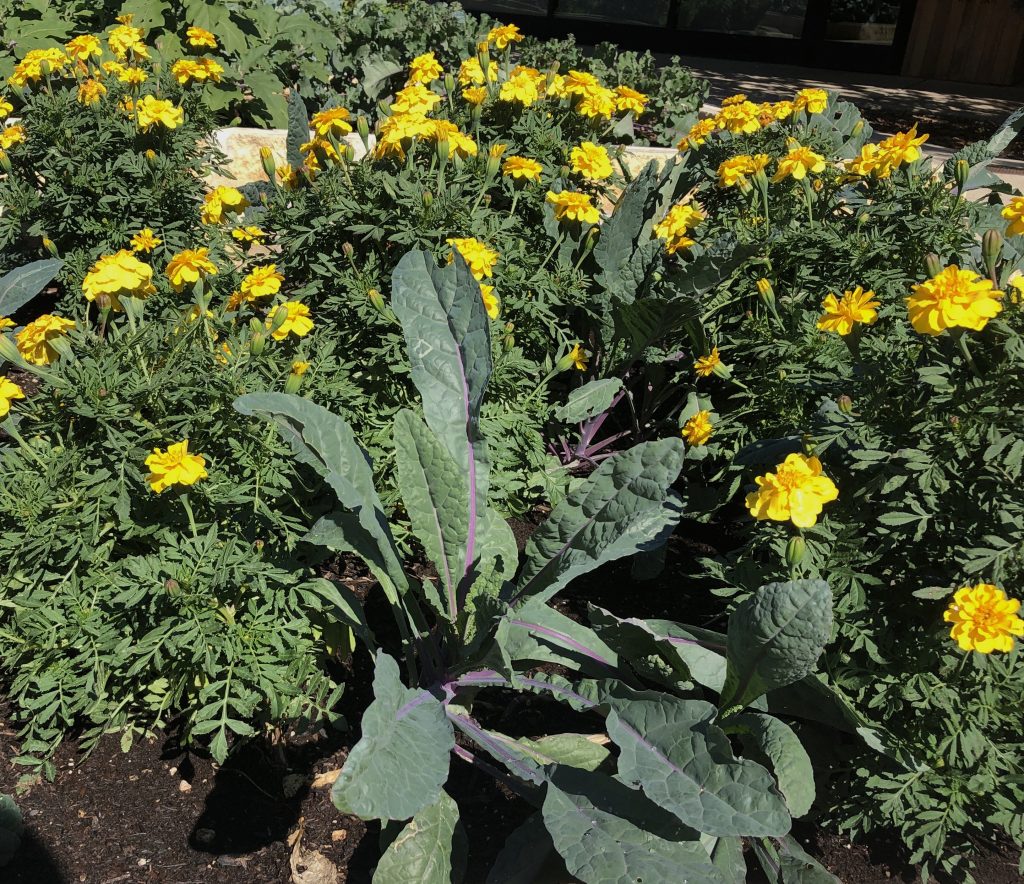By Anne Moss, Bexar County Master Gardener
November 2023
Note: This is one of a continuing series of articles featuring vegetables found in the San Antonio Botanical Garden (SABOT) Culinary Garden, where Bexar County Master Gardeners serve as volunteer docents.
Kale is a cool-season leafy green that is best grown in the fall or early spring in south Texas. It is a “cole” crop, meaning that it is one of various plants belonging to the Cruciferae or mustard family.



Kale is an attractive vegetable in the garden, excellent for your health, and contains large amounts of vitamin A, vitamin C and calcium. Kale can be cooked in pasta, soups, casserole dishes, or served raw in salads. My personal favorite dish is spaghetti with cherry tomatoes and kale.
How and Where to Plant Kale
Kale prefers full sun but will tolerate partial shade. It should be planted in well-drained soil with lots of organic matter such as compost.
Kale grows best when the temperatures are between 40-75 degrees F, although it can survive more extreme temperatures, even below freezing. In San Antonio, the recommended planting times are February 1 – March 25 (seeds) and August 20 – September 10 (seeds or transplants). Transplants may be able to be planted after mid-September if warm fall weather persists).
While kale can be planted in a traditional vegetable bed, it may also be used as a border for flower beds, along a path or sidewalk, or in containers.



Kale will be most healthy and productive if the plants are not crowded, but spaced apart so that each leaf receives as much sunlight as possible. The exact spacing between each plant varies according to the particular variety you select.
You can choose from many varieties of kale in shades of green, purple and white. Texas A&M AgriLife recommends varieties such as Dwarf Blue Curled Vates, Green Curled and Redbor.
This fall, the SABOT Culinary Garden is featuring Redbor and some Tuscan-type kales, among others. Another growing option is ornamental kale, which is known for having large, colorful heads that look their best in full sun. Ornamental kale is edible, although not the best choice for eating.
Tips for Successfully Growing Kale
- Thirty days before planting, prepare the planting area by working a granular garden fertilizer (10-10-10) into the soil and water thoroughly. Continue fertilizing on a regular basis once the plants are actively growing. You may consider using a liquid organic fertilizer (6-12-6).
- Once the kale plant has grown multiple leaves, you can start harvesting the outside leaves, and continue to harvest from the bottom as the plant grows taller.
- If you notice small holes in the kale leaves, check the underside of the leaves for green cabbage loopers or other caterpillars. These may be removed by hand and destroyed or controlled by spraying with Bt (Bacillus thuringiensis) or Spinosad. Follow the directions on the product label.
- Remove plants from the garden if they appear to be very insect-damaged or when daily spring temperatures rise to over 70 degrees.
For more information:
Spinach & Other Greens https://aggie-horticulture.tamu.edu/wp-content/uploads/sites/10/2013/09/EHT-040.pdf
All photos by author

